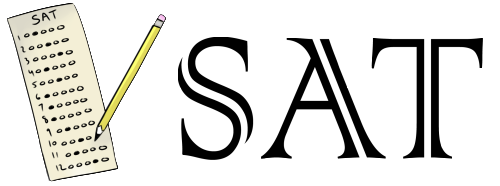‘March’ Onward with the Revised SAT

REBECCA ZENG
News Editor
NADIA GOV
Staff Writer
From March 2016 onwards, students will no longer aim a perfect the score of 2400 on the nationwide Scholastic Aptitude Test (SAT). Instead, with the revised SAT, 1600 will be the highest score, along with other changes. The various changes will be aligned with Common Core State Standards (CCSS), according to The New York Times.
According to College Board, the revised SAT will consist of three mandatory parts: reading, writing and math. The test is now scheduled to be a three hour long exam, with a 65-minute reading section, a 35-minute writing and language section, an 80-minute math section (25 minutes allotted for a non-calculator portion and 55 minutes allotted for a calculator portion) and an optional 50-minute essay section. The revised SAT will also have no penalty for incorrect answers, unlike the current SAT which has a one-fourth point deduction for incorrect answers. Four answer choices, instead of the current five choices, will be provided for each multiple choice question. Moreover, test-takers will have the option of taking a digital version of the assessment on a computer compared to the traditional pencil and paper variant.
Because the test is aligned with CCSS, students will be asked to interpret and locate evidence in passages and charts. According to College Board, the reading section will include five to six passages regarding science, social science or history. The reading and writing portions will only consist of passages and informational charts with relevant questions, instead of stand-alone questions about vocabulary and grammar.
“I like how [the revised SAT] won’t test us on [advanced vocabulary] that we won’t use ever again after [the] test,” junior Dilagsayini Mylvaganam said.
According to College Board, the math portion will include three topics: problem solving and data analysis, heart of algebra and passport to advanced math. The questions will be based on logic and reasoning to solve problems in real-life contexts. In the revised test, math questions will be split into two sections: one with calculators and one without calculators.
The math portion for the revised SAT will focus on multi-step problems and higher-level math, according to the Princeton Review. In an effort to align with CCSS, the math portion will also include word problems to test students in translating between English and math. The shift toward conceptual learning and questioning will also be present in the revised SAT.
For the optional 50-minute essay, students will write an analysis of an argumentative text. Instead of writing about their opinions and personal experiences, students will instead be told to analyze an author’s rhetorical devices and persuasive techniques. Though the essay is optional, some schools, such as Caltech and the Universities of California (UCs), require or recommend completion of the essay for admissions.
Overall, the revised SAT, aligned with CCSS, will feature real-world examples in all sections. The revision hopes to prepare students for college by exposing them to problems and concerns within a global context, according to the College Board website.